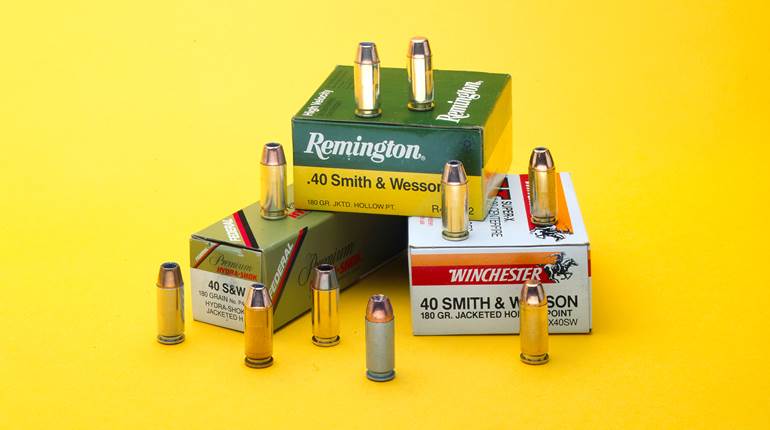
When the automatic pistol was a fresh new concept, designers of that time faced the same problem that modern designers also face—feeding. Since the slide and breech face of a pistol are directly behind the chamber end of the barrel, the pistol magazine has to be below and behind the chamber. A round of ammunition must come off the top end of a magazine, slide up a feed ramp and enter the chamber. At the same time, the rear end of the cartridge must clear the magazine feed lips and pivot upwards so the rim slides under the hook of the extractor. It is a complex series of mechanical functions that must happen in sequence or a serious malfunction will ensue. Many things can go wrong and any of them constitute a bottleneck in the feeding cycle. Curiously enough, designers of yesteryear worked out those problem bottlenecks with the help of yet another bottleneck. This one, however, was in the cartridge, not the gun and it was a shape, not a problem.
Virtually all of the first generation autos used a type of cartridge where the body of the round is larger than the mouth. That portion tapers down from the body in an angled step, which gets its name from its resemblance to the shape of a wine bottle. Most popular sporting and military rifle cartridges have this type of contour. When it all started with repeating pistols, gun designers used the bottlenecked shape because it helped the mechanism's feeding. The rear end of the chamber had to be big enough to accept the full, greater diameter of the cartridge, so having a smaller front end was like throwing a one-inch ball into a two-inch hole. The early pistols of Borchardt, Luger and Mauser all used bottlenecked cartridges.
For decades, the standard Russian service pistol was the Tokarev, which fired a high-velocity bottleneck cartridge. The same round worked very well in several models of submachine guns. There are some internal ballistics advantages to a cartridge of this shape, but it is in the feeding that really made it easy for gun designers. For unknown reasons, American designers went with straight-sided cases like the .45 ACP, .380 Auto and .38 Super. It was not until the mid ‘90s that a new bottleneck cartridge appeared on the American handgun scene. The .357 Sig was developed by SIG for their P series autos. Based on the popular .40 S&W, this little fireplug of a round will run with the legendary .357 Mag., as long as you keep bullet weight the same at 125 grains. Best of all, it doesn't jam. I have over 6,000 rounds through my P226 and it has never jammed. That's impressive.




































